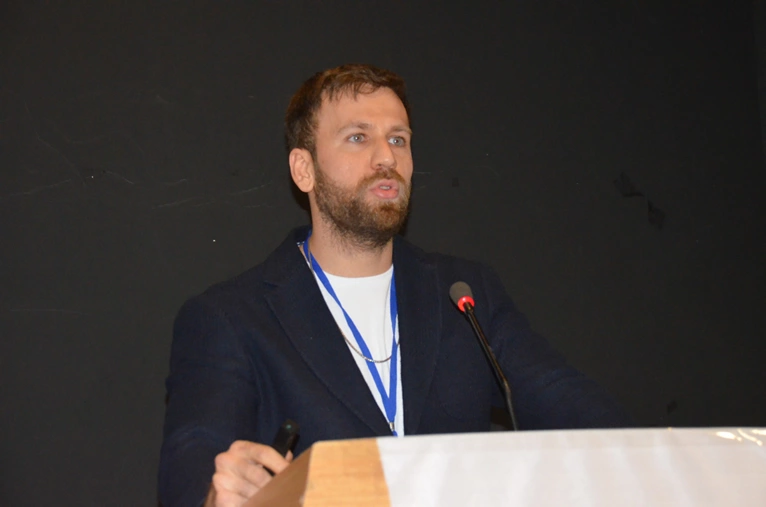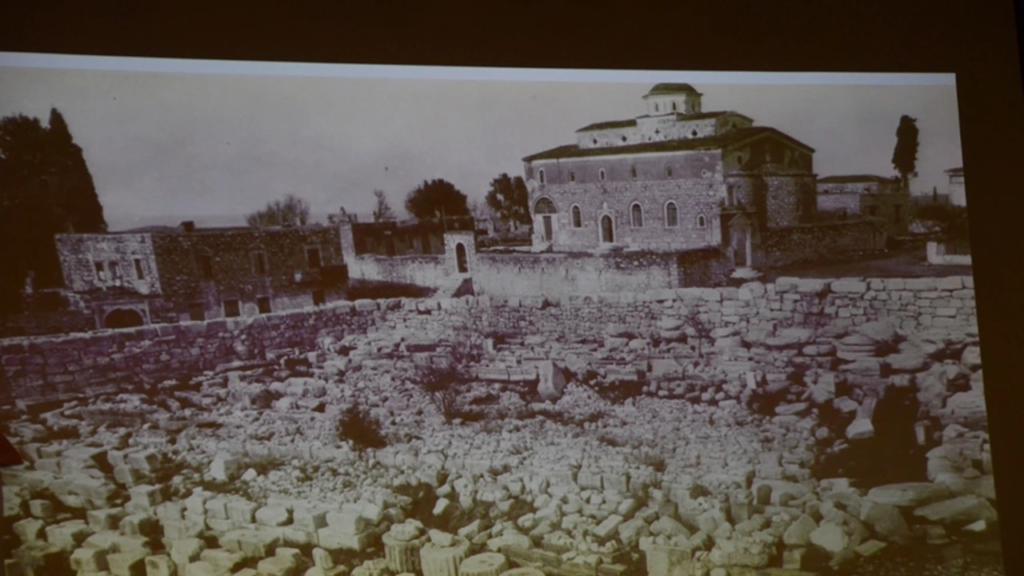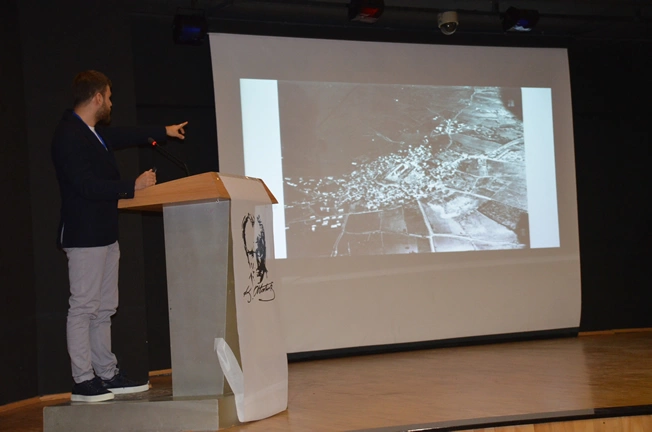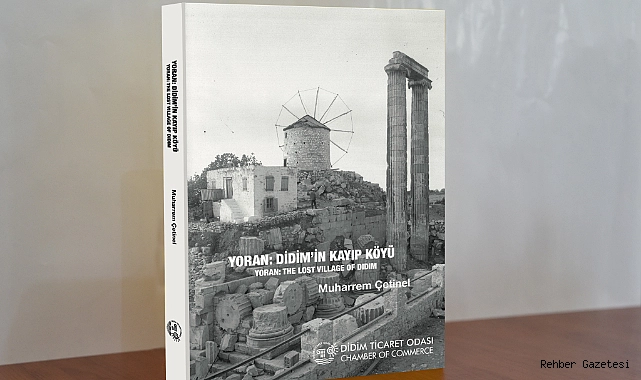Architect Muharrem Çetinel has released a new book ‘Yoran: Didim’s Lost Village’ – specifically addressing the community that once thrived around the Temple of Apollo from the 1600s onwards.
Çetinel recently gave an insightful presentation to accompany the publication during a recent two-day “Didim Culture and Tourism symposium”, organized by ADÜ Didim Vocational School and Didim Chamber of Commerce.

Çetinel, a Master Architect and native of Didim, spoke about the project titled “A Vanishing Village;” which was inspired by his master’s thesis. Didim Chamber of Commerce undertook the printing of 1000 copies of the book which is in two languages – Turkish and English.
Referring to the historical architectural structure and urbanization progress of Didim from the 1600s to the present day, Çetinel explained his information by supporting presentation photographs.
In his presentation, Çetinel said: “I am a native of Didim. For me, Yoran Village and Didim was a subject I was born in, grew up in, and knew about. I completed my undergraduate education at Mimar Sinan University and completed my master’s degree at the same university.
“I chose Yoran Village as the subject of my thesis. Surprisingly, architecture had never been studied or evaluated. My research took a very long time. Although I planned for it to be completed in a year, I completed the study, which lasted two and a half years, and graduated in October.

“At that time I was collecting a lot of old photographs. I examined more than a hundred sources about Didim. I also mentioned these sources in the references. People were curious about my work. I created the book with the idea that people could see the old photos I collected and also learn the information I found interesting.”
He said: “Before the population exchange between Turkey and Greece, Greeks whose ancestors lived in Didim had formed an organization where they came together. They would come together at certain times and organize symposiums. I benefited from the knowledge of these people for the book. This information was only in Greek. I also benefited from two books about this place written by Greeks who emigrated from here. It was not mentioned in any book in Turkish or any other language. They shared a lot of resources about Didim.
“Thus, I have touched upon Yoran’s pre-exchange period a lot. This is not a subject that is well known by the people living in Didim and the locals. Secondly, the German excavation team helped me a lot. I created English texts and sent them to them for confirmation of the information I obtained. I proceeded with this logic.”

He added: “I talk about traditional architecture in Yoran village. When was the village founded and developed? Was there life before the Greeks settled, and if so, who was there? I mentioned information such as this in the historical section.
“The part I call traditional architecture begins after the Greeks settled here. Later, during the population exchange, our great-grandfathers came here. I also talked about that process and explained how Yoran has developed until today.
”I explained how the neighborhoods were named during the Greek period and after the population exchange. I explained transportation by examining ports and roads.
“I examined religious buildings. I mapped 6 churches around the temple alone. I started searching for the locations of nearly 30 churches around the village that were included in old maps. By comparing them with today’s maps, I found more than 10 of them and included them in the book.
“I included the photos of Altınkum before it was opened for development, the arrival of the development committee, and the process of opening it to tourism, and included them in the book. I examined many photographs and newspaper reports. I did research at the Provincial Public Library in Aydın. I received new information from my contacts and added it.
“The period when Didim showed the biggest change was the period of the Balat earthquake. Didim’s fate changes after the earthquake. Yenimahalle is being opened for development, and it is decided to build a beach site in Altınkum. Important bureaucrats also host homes here. While researching this period, I examined newspaper reports from 1955 to 1960. I found all the interesting news about this region and included it in the book.
“I cited written sources for the information in my book. There are many references in the book. I wanted those who want to do a deeper reading to benefit from it by stating which source, which page, and which official document it was taken from. “There is also information that I identified as oral testimony, but I made footnotes for all of them,” he said. He thanked everyone who supported him.

At a press conference held to promote my book, Didim Chamber of Commerce Chairman Hilmi Erbaş stated that Çetinel had carried out valuable work and compiled it all, creating a cultural work that will also contribute to the promotion of Didim.
He emphasized that the Chamber of Commerce decided to support this book to record the culture and history of Didim and pass it on to future generations. Erbaş continued his words as follows: “We decided to present the book to Didim as a cultural service. Printing operations have started. We wanted to come together and share with you. We are printing 1000 copies to start. We can reproduce it again if necessary.”
Erbaş said the book would be shared with public institutions, members of the press, the Governorship, the excavation team, the Ministry of Culture and Tourism, museums and other relevant institutions.